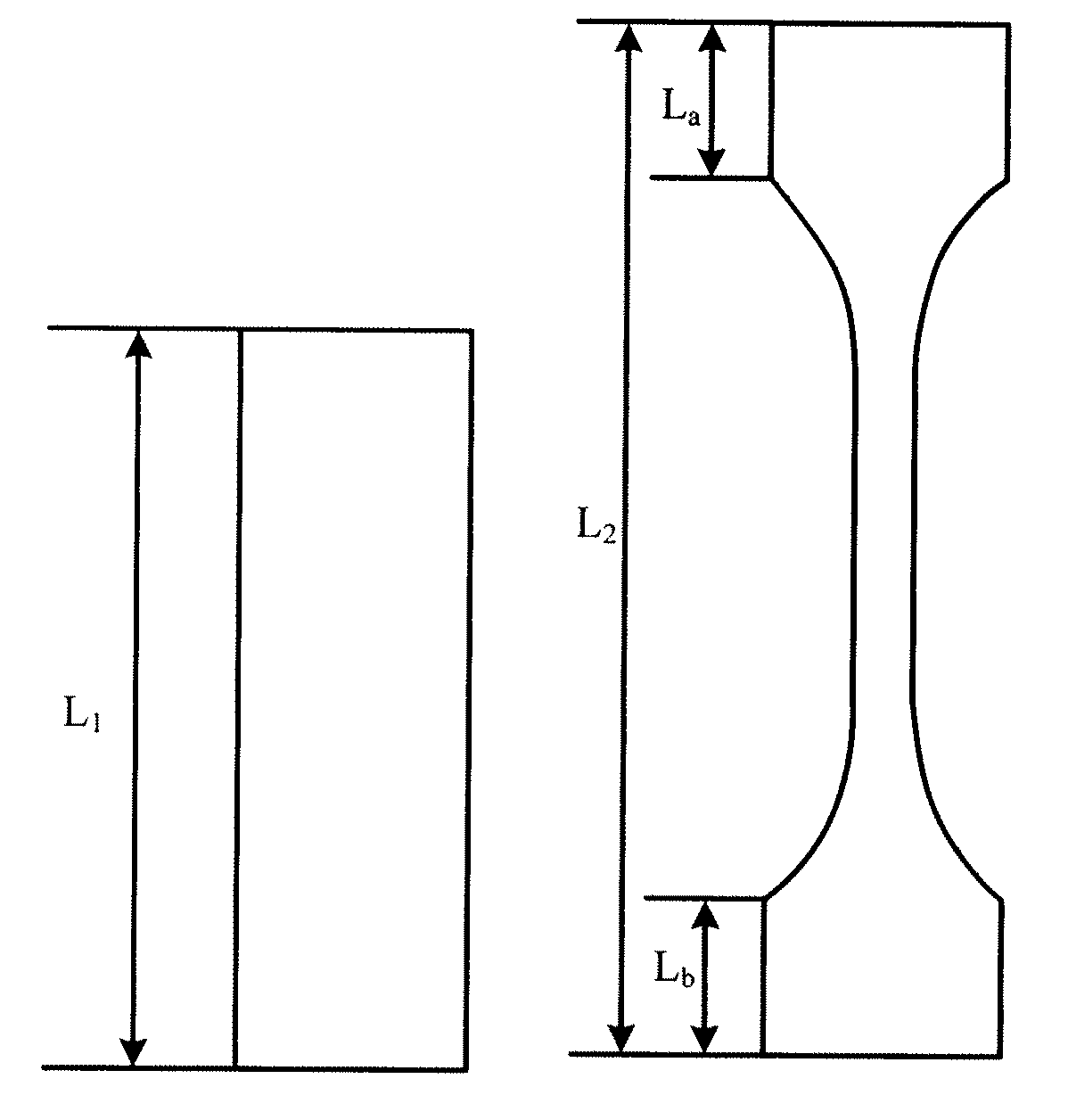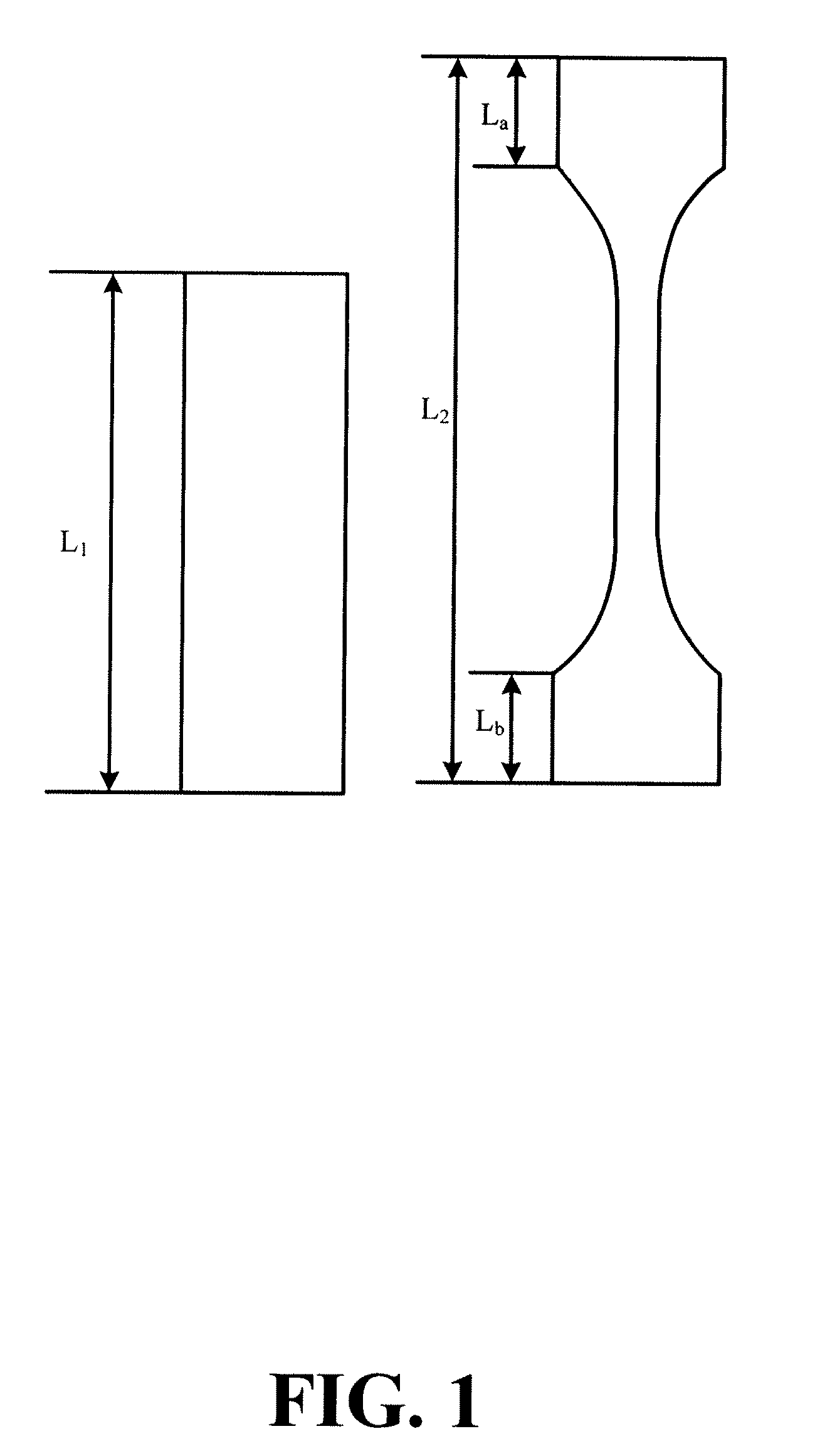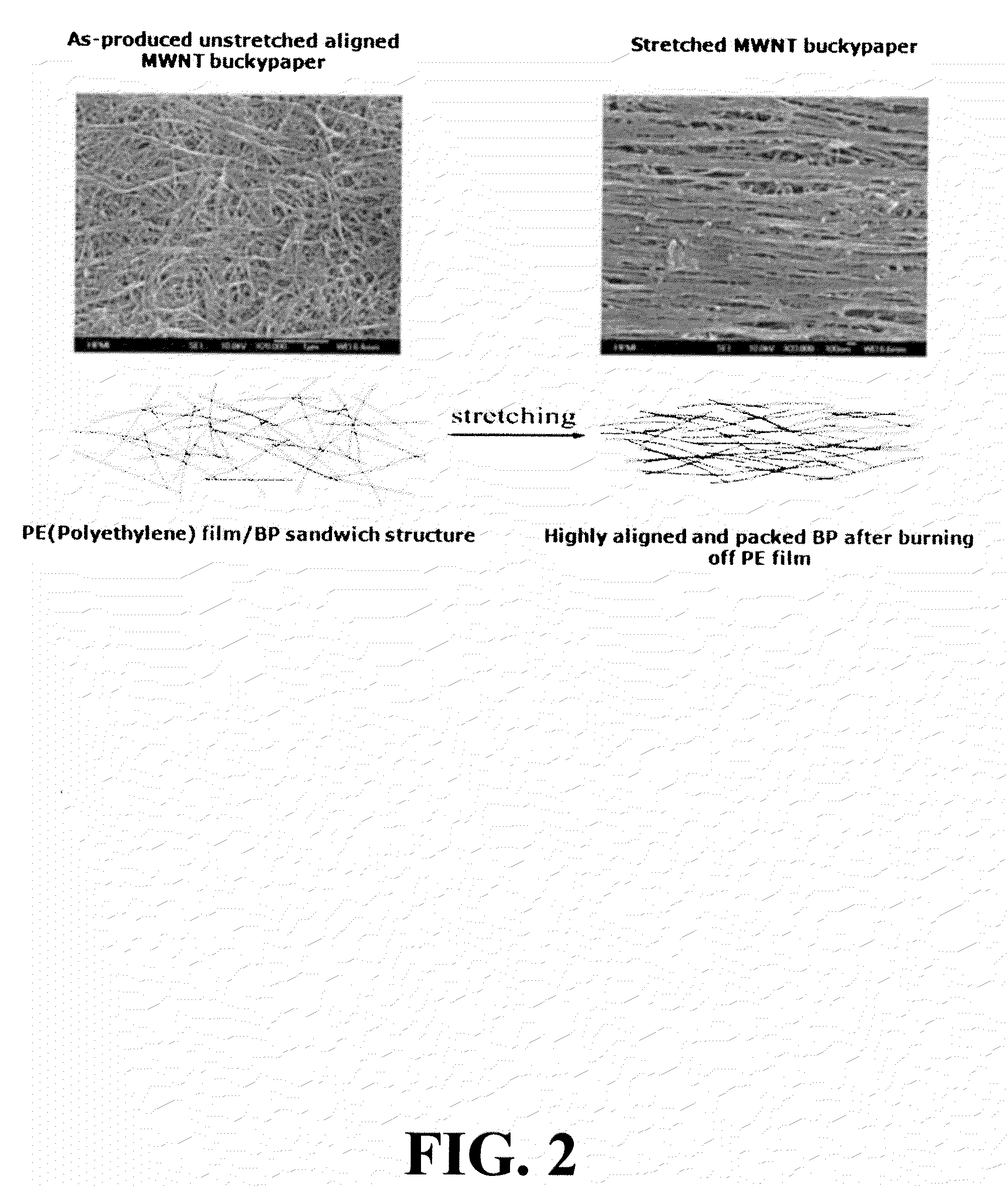Nanoscale fiber films, composites, and methods for alignment of nanoscale fibers by mechanical stretching
a nanoscale fiber and composite technology, applied in the field of nanoscale fibers, can solve the problems of poor load transfer between the matrix and the cnts when the composites are used, hindering the development of practical methods to further improve the alignment of nanoscale fibers in bp, and exhibiting exceptional mechanical and functional properties
- Summary
- Abstract
- Description
- Claims
- Application Information
AI Technical Summary
Benefits of technology
Problems solved by technology
Method used
Image
Examples
example 1
[0109]BP / PE composite films were made using the following procedure: The BP was sandwiched with PE film (two layers on both sides of the BP) in a vacuum bag with 14.7 PSI vacuum pressure at 190° C. for 30 min. The BP / PE composite was cooled in the vacuum bag to room temperature. The buckypaper used was slightly aligned (i.e., less than 20% degree of alignment) MWNT film sheets from Nanocomp (Concord, N.H.). The aerial density of the buckypaper was 20-25 g / m2. The PE film was clear plastic cling wrap that was manufactured by the GLAD®Products Company (CA 94612), which had an area density of about 13.5±0.5 g / m2.
[0110]The BP / PE composite films were stretched using the following steps: The composite strip was mounted on the clamp of a Shimazu machine (AGS-J Model) and stretched by the machine at a speed of 1 mm / min to the desired deformation or stretching ratio. An electric dryer (Dryer 00415, L&R® Manufacturing, NJ 07032) was used to heat the composite film to about 60±10° C. during st...
example 2
[0116]A bismaleimide (BMI) resin (BMI resin 5250-4 from Cytec Inc.) was used to make composites with improved thermal and mechanical properties. In particular, composites reinforced with BMI were fabricated with high carbon nanotube loading (up to 60 wt %) BP. The BP used were randomly oriented MWNT film sheets from Nanocomp (Concord, N.H.).
Mechanical Stretching Alignment
[0117]The random BP were stretched using a Shimadzu machine to align the CNTs. The crosshead speed during stretching was 0.5 mm / min in all stretching experiments. Since the randomly oriented CNT BPs had good stretch characteristics and strength, they could be stretched without using a supporting medium. The randomly oriented CNT BPs were stretched to a stretch ratio up to about 40%. Attempts to stretch the BPs beyond a 40% stretch ratio led to breakage of CNT BP strips. The alignment degree was characterized by polarized Raman spectrum and small angle X-ray scattering.
Fabrication of BP / BMI Composites
[0118]The bulk B...
example 3
[0133]Slightly aligned (i.e., less than 20% degree of alignment) MWNT film sheets from Nanocomp Technologies Inc. were mechanically stretched using a Shimadzu machine (AGS-J, Shimadzu Scientific Inc., Japan) to enhance nanotube alignment. The randomly dispersed MWNT sheets manufactured by Nanocomp Technologies Inc. (Concord, N.H.) include millimeter-long and small-diameter (˜3-8 nanometers) MWNTs with a range of 2-5 walls, providing an aspect ratio up to 100,000.
[0134]The crosshead speed during stretching was 0.5 mm / min. There was no observed retraction after stretching. The stretching ratio of the MWNT sheets was calculated using Equation 1. MWNT sheets were processed at three stretch ratios (30%, 35%, and 40%) for composite fabrication. The composite samples had approximately 60 wt % nanotube weight fraction or loading. For a 40%-stretched CNT sheet (i.e., the post-stretch sheet was 40% longer than the pre-stretch sheet), the degree of alignment of the CNT sheet was dramatically i...
PUM
| Property | Measurement | Unit |
|---|---|---|
| length | aaaaa | aaaaa |
| Young's modulus | aaaaa | aaaaa |
| tensile strength | aaaaa | aaaaa |
Abstract
Description
Claims
Application Information
 Login to View More
Login to View More - R&D
- Intellectual Property
- Life Sciences
- Materials
- Tech Scout
- Unparalleled Data Quality
- Higher Quality Content
- 60% Fewer Hallucinations
Browse by: Latest US Patents, China's latest patents, Technical Efficacy Thesaurus, Application Domain, Technology Topic, Popular Technical Reports.
© 2025 PatSnap. All rights reserved.Legal|Privacy policy|Modern Slavery Act Transparency Statement|Sitemap|About US| Contact US: help@patsnap.com



